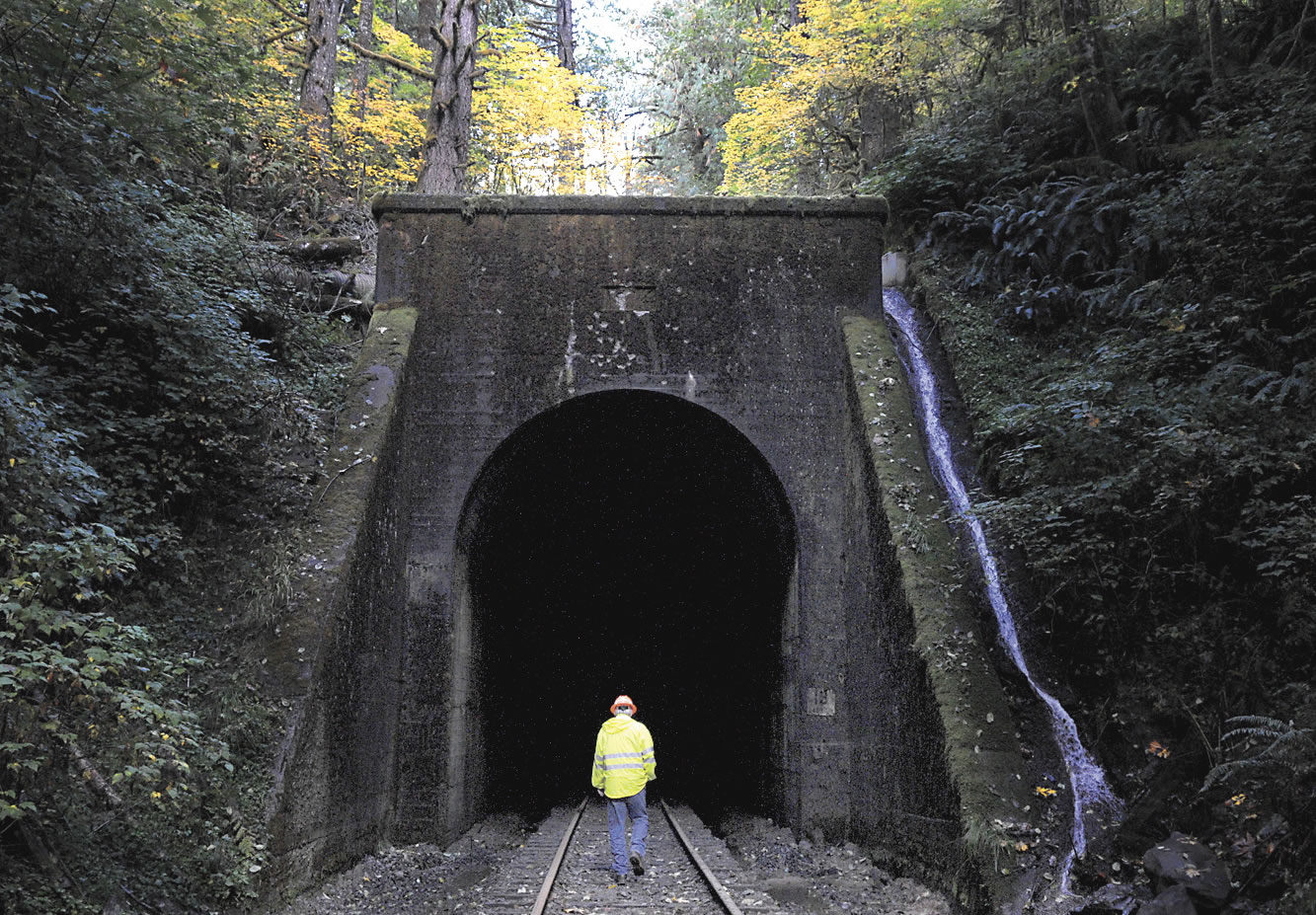COOS BAY, Ore. — When the railroad closed, hundreds of jobs vanished. Engineers had to find other rail companies. Business that relied on rail to transport goods contracted, some considered closing.
“It’s like I was on a two-week vacation for two years,” said Randy King, a former engineer on the coastal railway that connects Eugene with Coos Bay. King left Oregon for another job after the line to Coos Bay was embargoed, due to years of deferred maintenance, in 2007. Two years later he lost that job, so he returned to the south coast to look for work and care for his ailing father.
His story mirrors dozens of other south Oregon Coast residents directly connected to the railroad. And like most of them, it ends happy.
When the Coos Bay Rail Link reopened in 2011, King got his job back.
“It’s like riding a bike,” he said, smiling beside the CBRL’s bright blue locomotive. “You never really forget.”
Rail workers and customers may be happy now, but they say the four years without service took a toll.
For example: American Bridge built a $12 million steel fabrication facility outside Reedsport in 2003. The company felt it needed a factory that could produce customized steel components for West Coast construction projects. Its only other fabrication facility was near Pittsburgh.
“Douglas County made this site very attractive,” said Fred Jacquot, American Bridge’s sales manager as he stood in the Reedsport facility’s main office building.
“We needed a site that had water access and rail access,” he said. “We chose this site because we needed rail access.”
At its peak, the company employed about 100 people.
For four years, the company climbed. Then in Sept. 2007, without warning, the railroad folded. Almost overnight, the plant went quiet.
“When we lost the ability to ship by rail, we couldn’t compete in the Midwest,” Jacquot said.
A rail car can carry four times the tonnage a semi-truck can, and costs far less to hire. Without rail, the company could no longer afford to bid on large projects, or any project outside the immediate region.
American Bridge entered the Great Recession already wounded. Within months, 100 employees shrunk to 10.
It was a similar story at all the local sawmills, except sawmills used the railroad almost every day, shipping lumber around the country. When the rail closed, there weren’t enough trucks to handle the volume of lumber being shipped.
“We tried to service our customers that were being serviced on rail as well as we could using truck carriers,” said Brian Paul, the plant manager at Coos Head Forest Products. That “became expensive because everybody else in the area was trying to do the same thing.”
“This railroad, they had let it go for a long period of time,” said Tom Foster, CBRL’s general manager. “They thought it wasn’t worth repairing, and they didn’t care. They didn’t care about the community.”
Central Oregon & Pacific Railroad closed this line in 2007, declaring it unsafe due to years of deferred maintenance. As South Coast rail customers scrambled to adjust, the Oregon International Port of Coos Bay looked for a solution. It gathered $16 million dollars from grant money, and in 2009 purchased the defunct line.
The port then raised another $30 million in state and federal grants to repair the railway. Foster came on as CBRL manager in 2011, just as the port completed enough repairs to restore service to a few saw mills and American Bridge.
The first train crawled from Eugene to the Southport Forest Products lumber yard in Oct. 2011, and was welcomed by a small, cheering crowd.
It was a landmark event, Foster said. But his work was just beginning.
The key to the railroad’s long-term survival is customers, Foster said. So, he’s been networking and making cold calls.
“When we started this railroad, we ran it on a thumbnail,” Foster said. “And we still run it on a thumbnail, but it’s not as bad.”



